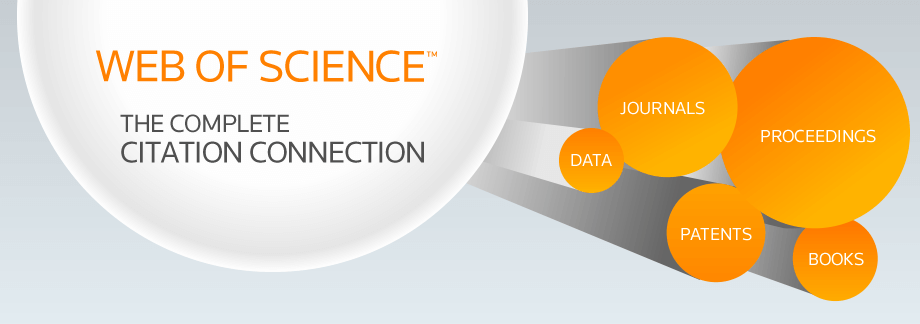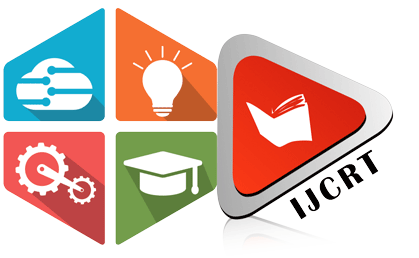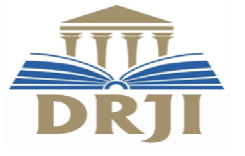INTERNATIONAL JOURNAL OF CREATIVE RESEARCH THOUGHTS - IJCRT (IJCRT.ORG)
International Peer Reviewed & Refereed Journals, Open Access Journal
IJCRT Peer-Reviewed (Refereed) Journal as Per New UGC Rules.
ISSN Approved Journal No: 2320-2882 | Impact factor: 7.97 | ESTD Year: 2013
Call For Paper - Volume 13 | Issue 11 | Month- November 2025
Scholarly open access journals, Peer-reviewed, and Refereed Journals, Impact factor 7.97 (Calculate by google scholar and Semantic Scholar | AI-Powered Research Tool) , Multidisciplinary, Monthly, Indexing in all major database & Metadata, Citation Generator, Digital Object Identifier(CrossRef DOI)
Contact Us Click Here
WhatsApp Contact Click Here
Volume 12 | Issue 3
| IJCRT Journal front page | IJCRT Journal Back Page |
Paper Title: Collection development policy college libraries: A study affiliated to CSJM University Kanpur
Publisher Journal Name: IJCRT
Your Paper Publication Details:
Published Paper ID: - IJCRT2403851
Register Paper ID - 253608
Title: COLLECTION DEVELOPMENT POLICY COLLEGE LIBRARIES: A STUDY AFFILIATED TO CSJM UNIVERSITY KANPUR
Author Name(s): Dr. Archana Tiwari
Publisher Journal name: IJCRT
Volume: 12
Issue: 3
Pages: h127-h134
Year: March 2024
Downloads: 156
Abstract
The chief function is the evolution of the need based collection which is essential to aid the academic community which makes the collection accessible and even vitalizes the ferocious usage of the collection. The story conducted discloses some of the important and fascinating fact tool.
Licence: creative commons attribution 4.0
License
Keywords
Collection development policy college libraries: A study affiliated to CSJM University Kanpur
License
Paper Title: A Study On Brand Switching Behavior Of Consumer In Hair Care Products
Publisher Journal Name: IJCRT
Your Paper Publication Details:
Published Paper ID: - IJCRT2403850
Register Paper ID - 253572
Title: A STUDY ON BRAND SWITCHING BEHAVIOR OF CONSUMER IN HAIR CARE PRODUCTS
Author Name(s): LATHA .M, DR.P KEERTHIKA
Publisher Journal name: IJCRT
Volume: 12
Issue: 3
Pages: h122-h126
Year: March 2024
Downloads: 194
Abstract
This study explores the efficiency and limitations of various hair care products in promoting healthy and vibrant hair. Through a diverse sample, we assess the impact of different products, considering individual hair types. While acknowledging the positive outcomes, we identify potential limitations, such as the need for consistent use and the risk of product build up. This abstract highlights the importance of a balanced approach to hair care, emphasizing personalized routines for optimal results.
Licence: creative commons attribution 4.0
License
Keywords
Brand switching, hair care products, consumer behavior
License
Paper Title: THE FABRICATION AND MECHANICAL TESTING OF RAMIE AND FLAX FIBER EPOXY REINFORCEDCOMPOSITE WITH NANO TiO2 FILLER.
Publisher Journal Name: IJCRT
Your Paper Publication Details:
Published Paper ID: - IJCRT2403849
Register Paper ID - 253584
Title: THE FABRICATION AND MECHANICAL TESTING OF RAMIE AND FLAX FIBER EPOXY REINFORCEDCOMPOSITE WITH NANO TIO2 FILLER.
Author Name(s): Potireddy Suryaprasad, Bandi lakshmi sriram, Sabbavarupu Jaswanth, Teki Jaya Krishna, M.sreenivasa Rao
Publisher Journal name: IJCRT
Volume: 12
Issue: 3
Pages: h111-h121
Year: March 2024
Downloads: 179
Abstract
This study investigates the fabrication and mechanical properties of ramie flax fiber epoxy composites reinforced with nano TiO2 filler. Ramie flax fibers were incorporated into an epoxy matrix along with varying concentrations of nano TiO2 filler. The composites were fabricated using a hand lay-up technique followed by compression molding. Mechanical testing, including tensile, flexural, and impact tests, bio-degradable was conducted to evaluate the performance of the composites. Results indicate that the addition of nano TiO2 filler enhances the mechanical properties of the composites compared to those without filler. Furthermore, scanning electron microscopy (SEM) analysis was employed to examine the morphology and interfacial bonding of the composites. Overall, this research demonstrates the potential of utilizing ramie flax fiber epoxy composites with nano TiO2 filler for various structural applications, offering improved mechanical performance and sustainability.
Licence: creative commons attribution 4.0
License
Keywords
Ramie flax Fiber, epoxy composites, nano TiO2 filler, fabrication, mechanical testing, tensile strength, flexural properties, impact resistance, SEM analysis, interfacial bonding.
License
Paper Title: A STUDY ON CONSUMER PURCHASING BEHAVIOUR TOWARDS PERFUMES IN ONLINE STORE AND OFFLINE STORE WITH SPECIAL REFERENCE TO COIMBATORE CITY
Publisher Journal Name: IJCRT
Your Paper Publication Details:
Published Paper ID: - IJCRT2403848
Register Paper ID - 253465
Title: A STUDY ON CONSUMER PURCHASING BEHAVIOUR TOWARDS PERFUMES IN ONLINE STORE AND OFFLINE STORE WITH SPECIAL REFERENCE TO COIMBATORE CITY
Author Name(s): MANASAA DEVI.V.J., Dr.P. KEERTHIKA
Publisher Journal name: IJCRT
Volume: 12
Issue: 3
Pages: h106-h110
Year: March 2024
Downloads: 185
Abstract
This study explores the consumer purchasing behavior towards perfumes in both online and offline retail environments, focusing on Coimbatore City. With the rise of e-commerce, understanding the dynamics between online and offline shopping behaviors has become increasingly important for businesses. Employing statistical tools such as Karl Pearson correlation and chi-square analysis, this research aims to uncover the factors influencing consumers' choices between online and offline perfume purchases.
Licence: creative commons attribution 4.0
License
Keywords
Consumer Purchasing Behavior, Perfumes, Online Stores, Offline Stores.
License
Paper Title: Textile Reuse and Recycle: A step towards Circular Economy
Publisher Journal Name: IJCRT
Your Paper Publication Details:
Published Paper ID: - IJCRT2403847
Register Paper ID - 253843
Title: TEXTILE REUSE AND RECYCLE: A STEP TOWARDS CIRCULAR ECONOMY
Author Name(s): Dr Suniti Sood
Publisher Journal name: IJCRT
Volume: 12
Issue: 3
Pages: h102-h105
Year: March 2024
Downloads: 166
Abstract
The textile industry is one of the largest contributors to global environmental degeneration, with high consumption of resources, water pollution, and huge amounts of waste generation. With the continuous growth of the industry, there is a grave need to transition towards more sustainable practices. The recycling and reuse of textiles have emerged as vital strategies in this transition, offering noteworthy potential to reduce waste, conserve resources, and move towards a circular economy model. The lifespan of clothing and other textile products can be extended by textile and garments reuse and finding alternative uses for them. This involves donating clothes to charity, selling or exchanging items through secondhand markets, or repurposing textiles for new uses. By giving garments, a second or even third life, textile reuse not only lessens waste but also conserves resources and decreases greenhouse gas emissions linked with garment production. Similarly, textile recycling converts textile waste into new products or raw materials, reducing pollution, preserving resources, and creating new economic prospects. These practices help reduce production of waste, decrease environmental impact, and increase resource efficiency, keeping in line with the principles of a circular economy where materials are kept in use for as long as possible. However, challenges such as scarcity of infrastructure, complexity of materials, and economic plausibility need to be addressed to realize the full potential of textile reuse and recycling. Collaborative efforts across the textile supply chain, alongside innovations in recycling technologies and sustainable fashion practices, are important for proceeding towards a circular economy in the textile industry.
Licence: creative commons attribution 4.0
License
Keywords
Textile, Reuse, Recycle, Circular Economy, Sustainability
License
Paper Title: Role of Carbonic Anhydrase in Hypoxic Conditions: From Molecular Mechanisms to Therapeutic Interventions.
Publisher Journal Name: IJCRT
Your Paper Publication Details:
Published Paper ID: - IJCRT2403846
Register Paper ID - 252802
Title: ROLE OF CARBONIC ANHYDRASE IN HYPOXIC CONDITIONS: FROM MOLECULAR MECHANISMS TO THERAPEUTIC INTERVENTIONS.
Author Name(s): Namrata Kumari, Monika Bhardwaj, Amrita Chatterjee, Kaberi Chatterjee, Papiya Mitra Mazumder
Publisher Journal name: IJCRT
Volume: 12
Issue: 3
Pages: h77-h101
Year: March 2024
Downloads: 183
Abstract
Hypoxia, characterized by insufficient supply of oxygen that triggers cascade of physiological responses from the individual level down to the regulation and function of the cell nucleus. Prolonged periods of low oxygen tension are a core feature of several disease states, with traditional treatment options limited to supportive measures and oxygen therapy. However,the emergence of carbonic anhydrase inhibitors presents a promising breakthrough in managing certain hypoxic conditions. Carbonic anhydrase inhibitors exhibit the capacity to modulate acid-base balanceaddressing metabolic alkalosis, and enhancing ventilation, thereby influencing respiratory responses. Although carbonic anhydrase inhibitors are not first line of treatment for hypoxia, recent literature shows the promising impact of carbonic anhydrase inhibitors in hypoxic conditions such as hypobaric hypoxia, hypoxic tumors, cerebral hypoxia, and coronary obstructive pulmonary disease.These findings suggest a shift from conventional approaches to a targeted pharmacological strategy for treatment and prophylaxis of such hypoxic conditions.In this review, we will highlight the latest insights into how low oxygen levels affect the body at a molecular level in common and significant diseases such as being at high altitudes (hypobaric hypoxia), tumors with insufficient oxygen (hypoxic tumors), low oxygen in the brain (cerebral hypoxia), and reduced oxygen levels in individuals with chronic obstructive pulmonary disease (COPD). Furthermore, we will explore how well carbonic anhydrase inhibitors work in addressing and managing these conditions.
Licence: creative commons attribution 4.0
License
Keywords
Hypoxia, Carbonic anhydrase inhibitors, Acetazolamide, Hypobaric hypoxia
License
Paper Title: DYNAMIC BATTERY CHARGING SYSTEM
Publisher Journal Name: IJCRT
Your Paper Publication Details:
Published Paper ID: - IJCRT2403845
Register Paper ID - 253392
Title: DYNAMIC BATTERY CHARGING SYSTEM
Author Name(s): Makarand V. Damale, Bhakti M. Sawant, Atharv S. Haryan, Simran Nadaf, Rashmi More
Publisher Journal name: IJCRT
Volume: 12
Issue: 3
Pages: h72-h76
Year: March 2024
Downloads: 151
Abstract
The Dynamic Battery Charging System(DBCS) aims to develop an advanced and efficient solution for managing and optimizing battery performance in various applications. Batteries are crucial power sources for a wide range of devices and systems, including electric vehicles, telecommunications infrastructure, and industrial equipment. However, improper battery management can lead to reduced performance, shortened lifespan, and safety risks. This project focuses on designing a comprehensive monitoring and charging system that addresses these challenges, ensuring optimal battery operation, longer lifespan, and improved efficiency.
Licence: creative commons attribution 4.0
License
Keywords
DYNAMIC BATTERY CHARGING SYSTEM
License
Paper Title: ENVIRONMENTAL JUSTICE AND HAPPINESS: AN OVERVIEW
Publisher Journal Name: IJCRT
Your Paper Publication Details:
Published Paper ID: - IJCRT2403844
Register Paper ID - 253908
Title: ENVIRONMENTAL JUSTICE AND HAPPINESS: AN OVERVIEW
Author Name(s): DR. JAYANTA KUMAR DASH
Publisher Journal name: IJCRT
Volume: 12
Issue: 3
Pages: h67-h71
Year: March 2024
Downloads: 169
Abstract
Abstract: The paper tries to explain the relationship between the environmental Justice and happiness and how the both concepts are responsible for the present and future generations to lead a healthy, wealthy, happy and sustainable life. It also highlights the objectives, different dimensions, principles, challenges and steps to achieve the environmental justice and happiness. Everybody wants to live a happy, healthy, disease free life in a clean, judicious and sustainable environment. A justiciable environment can help to reduce stress, improve the mood, enhances pleasure and peace, boost overall wellbeing. When we have a lot of money, palatial buildings, larger vehicles, great tunnels to move, we really need a healthy life to lead all the things, which is only possible in the real sense of environmental justice. So it is our prime responsibility to maintain the sustainability of the future environment. Thus the cry of the hour is to focus on the "Environmental Justice and happiness" which ultimately leads towards a Sustainable Natural Earth (SNE). Further the time has come to re-think about our environment and happiness in a practical and sustainable manner.
Licence: creative commons attribution 4.0
License
Keywords
Environment, Sustainable Environment, Sustainable Natural Earth, Distributional justice, Recognition justice, Procedural justice, Capabilities
License
Paper Title: A Comparative Study of Study Habits Among NSS and Non-NSS Volunteers
Publisher Journal Name: IJCRT
Your Paper Publication Details:
Published Paper ID: - IJCRT2403843
Register Paper ID - 253851
Title: A COMPARATIVE STUDY OF STUDY HABITS AMONG NSS AND NON-NSS VOLUNTEERS
Author Name(s): Biswamitra Purohit, Dr. Iswar Patel
Publisher Journal name: IJCRT
Volume: 12
Issue: 3
Pages: h55-h66
Year: March 2024
Downloads: 155
Abstract
This paper aimed at compare the study habit of NSS and Non-NSS volunteers. The study was delimited to NSS and Non -NSS volunteers of degree college affiliated to Sambalpur University within age range of 17-19 years in Boudh district of Odisha only. For this study, descriptive survey method was employed. Purposive sampling method has been adopted for the present study. Participants 200 students from different Degree Colleges who have under 19 years age of Boudh district in Odisha. 50 of them were NSS girls volunteers, 50 were Non NSS girls students, 50 of them were NSS boys volunteers and 50 were Non NSS boys students. In order to collect the data in the present study, the investigator used Study Habit Scale developed by Dimple Rani and M.L Jaidkawas (2015). To find the significance of difference between the various group's "t" test was applied. Finally, it was found that NSS boys have better study habits than non-NSS volunteer and also NSS girls have better study habits than non-NSS girl's volunteer but no significant difference is found in the study habits between NSS boys and NSS girl's volunteer.
Licence: creative commons attribution 4.0
License
Keywords
Study Habit, Adolescence Students, NSS boys volunteer, Non-NSS boys volunteer, NSS girls volunteer, Non-NSS girls volunteer
License
Paper Title: Integrated Vision-Based Autonomous Driving System using Open CV
Publisher Journal Name: IJCRT
Your Paper Publication Details:
Published Paper ID: - IJCRT2403842
Register Paper ID - 253873
Title: INTEGRATED VISION-BASED AUTONOMOUS DRIVING SYSTEM USING OPEN CV
Author Name(s): D Vijendra Kumar, Puvvala Du Sai Rama Krishna, Ratnala Vennela, Mandapati Vinod, Saka Vindhya Kumari
Publisher Journal name: IJCRT
Volume: 12
Issue: 3
Pages: h50-h54
Year: March 2024
Downloads: 166
Abstract
Previous innovative driving technologies have made incredible progress in individual aspects such as lane recognition, traffic sign recognition, and object recognition etc. These features, nonetheless though promising, it worked independently in autonomous driving. Although lane detection systems provided accurate vehicle stops, lane detection signs interpreted road signs, and detection systems detected obstacles, the lack of integration gave them limiting the ability to make joint contextual decisions This has led to operational deficiencies and security concerns. Our project marks a breakthrough in the autonomous driving landscape by developing an integrated vision-based autonomous driving system that integrates these important features. Road detection, vehicle sign recognition and object recognition are seamlessly integrated to work in harmony to provide a comprehensive and intelligent driving experience This integration facilitates real-time data fusion to display vehicles under and behave in synchrony with each other. Lane identification It ensures learning accuracy, traffic sign recognition provides important regulatory information, and protects sights from collisions. The combination of these features enhances the overall safety, performance, and reliability of autonomous vehicles.
Licence: creative commons attribution 4.0
License
Keywords
Object detection, Lane Detection, Computer Vision, Image Processing, Convolutional Neural Networks
License
Paper Title: Optimizing Road Safety: A Fog Computing Perspective on Accident Detection Systems in IoT
Publisher Journal Name: IJCRT
Your Paper Publication Details:
Published Paper ID: - IJCRT2403841
Register Paper ID - 253903
Title: OPTIMIZING ROAD SAFETY: A FOG COMPUTING PERSPECTIVE ON ACCIDENT DETECTION SYSTEMS IN IOT
Author Name(s): Nikita Kolte, Shailendra Kumar Mittal
Publisher Journal name: IJCRT
Volume: 12
Issue: 3
Pages: h37-h49
Year: March 2024
Downloads: 168
Abstract
This paper explores the multifaceted landscape of Accident Detection Systems employing Fog Computing within the Internet of Things (IoT) paradigm. Embracing a comprehensive approach, the review incorporates key technologies such as mobile computing, cloud resources, and various IoT applications. The paper extensively examines integrating these technologies in accident detection systems, emphasizing the role of fog computing in reducing latency and optimizing response times. Leveraging smartphone sensors and cloud resources, the surveyed studies showcase innovative methodologies to enhance the efficiency and accuracy of accident detection. The abstract aims to provide a holistic understanding of the technological synergies shaping modern approaches to road safety.
Licence: creative commons attribution 4.0
License
Keywords
Accident Detection, Cloud, IoT, Mobile computing, Fog Computing, GSM, GPS.
License
Paper Title: Deep Learning Techniques Using Garbage Classification
Publisher Journal Name: IJCRT
Your Paper Publication Details:
Published Paper ID: - IJCRT2403840
Register Paper ID - 253887
Title: DEEP LEARNING TECHNIQUES USING GARBAGE CLASSIFICATION
Author Name(s): Miss.Sayalee Suresh Alladwar, Mr. Hirendra Hajare
Publisher Journal name: IJCRT
Volume: 12
Issue: 3
Pages: h29-h36
Year: March 2024
Downloads: 126
Abstract
All nations already spend a lot of time recycling. The most crucial task to enable cost-effective recycling is trash sorting, which is one of the tasks desired for recycling. In this essay, we make an effort to identify each individual piece of trash in the images and categories. it according to its suitability for recycling. We get knowledge of various techniques and provide a thorough assessment. Aid vector machines (SVM) with HOG features, basic convolutional neural networks (CNN), and CNN with residual blocks are the models we employed. We draw the conclusion from the comparison results that easy CNN networks, with or without residual blocks, perform well. The target database's issue with garbage categorization can now be successfully resolved thanks to deep learning techniques.
Licence: creative commons attribution 4.0
License
Keywords
convolutional neural networks, trash classification
License
Paper Title: Building Resilience: Navigating Organizational Challenges and Uncertainties
Publisher Journal Name: IJCRT
Your Paper Publication Details:
Published Paper ID: - IJCRT2403839
Register Paper ID - 253725
Title: BUILDING RESILIENCE: NAVIGATING ORGANIZATIONAL CHALLENGES AND UNCERTAINTIES
Author Name(s): Krishna Rajput, Aakash Anand
Publisher Journal name: IJCRT
Volume: 12
Issue: 3
Pages: h27-h28
Year: March 2024
Downloads: 138
Abstract
In today's rapidly changing business environment, organizations face numerous challenges and uncertainties that can impact their success. Building resilience has become a critical aspect of organizational strategy, enabling companies to navigate disruptions effectively. This article explores the concept of resilience in the context of a logistics company and outlines key strategies for fostering resilience at all levels. Effective leadership, a growth mindset, open communication, diverse teams, robust risk management, and investment in employee well-being are highlighted as essential components of building resilience. Embracing technology, learning from adversity, and creating a positive work environment are also emphasized. By prioritizing these elements, logistics companies can develop a resilient culture that enables them to thrive in dynamic and unpredictable environments, turning challenges into opportunities for growth and innovation.
Licence: creative commons attribution 4.0
License
Keywords
resilience, effective leadership, growth mindset, communication, diversity, risk management, employee well-being, technology, learning from adversity.
License
Paper Title: Crop Yield Prediction Using Machine Learning
Publisher Journal Name: IJCRT
Your Paper Publication Details:
Published Paper ID: - IJCRT2403838
Register Paper ID - 253856
Title: CROP YIELD PREDICTION USING MACHINE LEARNING
Author Name(s): Cyril T, Archana P V, Vignesh G D
Publisher Journal name: IJCRT
Volume: 12
Issue: 3
Pages: h18-h26
Year: March 2024
Downloads: 240
Abstract
In this study, we present a novel crop production system that uses machine learning to transform agriculture. Using advanced algorithms, the system accurately predicts crop yields based on historical and real-time information, and optimizes resource allocation and farming decisions. Our goal is to improve precision agriculture by creating reliable and adaptive models that account for the various factors that influence yield variations. Crop yield prediction is one of the challenging tasks in agriculture. It plays an essential role in decision making at global, regional, and field levels. The prediction of crop yield is based on soil, meteorological, environmental, and crop parameters. Incorporating sensor data and satellite imagery, the system will understand optimal planting strategies and irrigation programs for sustainable agriculture. Continuously improving collaboration with farmers and stakeholders ensures efficiency, while a user-friendly interface promotes widespread adoption. This innovation is an important step towards efficient, sustainable, and data-driven crop management in modern agriculture.
Licence: creative commons attribution 4.0
License
Keywords
Convolutional neural networks (CNN), Machine Learning (ML), Artificial Neural Networks (ANN), Application Programming Interfaces (API), Extreme Gradient Boosting (XGB) Support Vector Machine (SVM)
License
Paper Title: FINGERPRINT VEHICLE ACCESS AND GSM COMMUNICATION FOR ENHANCED SECURITY
Publisher Journal Name: IJCRT
Your Paper Publication Details:
Published Paper ID: - IJCRT2403837
Register Paper ID - 253882
Title: FINGERPRINT VEHICLE ACCESS AND GSM COMMUNICATION FOR ENHANCED SECURITY
Author Name(s): D.Vijendra Kumar, Pedamallu Pavan Kumar, Boddepalli Chandu, Tumula Umesh Chandra, Challa Madhav Reddy
Publisher Journal name: IJCRT
Volume: 12
Issue: 3
Pages: h9-h17
Year: March 2024
Downloads: 228
Abstract
The cutting-edge Biometric Vehicle Access and GSM Communication for Enhanced Security seamlessly combines biometric technology with mobile communication to fortify vehicle security. Utilizing fingerprint recognition and GSM connectivity, it establishes robust authentication processes while ensuring user convenience. The integrated GSM module enables instant communication between the vehicle and the owner's mobile device, providing real-time alerts for suspicious activities. Sophisticated algorithms minimize false acceptances, adapting to changes in finger conditions and environmental variables. Engine ignition depends on successful biometric authentication and owner verification via SMS, ensuring foolproof security. Using of Arduino mega 2560, GSM sim900A, AS608 fingerprint sensor module provides accuracy and efficiency outputs. This innovative system enhances user experience by eliminating traditional keys and addresses concerns regarding vehicle theft and unauthorized usage in today's dynamic landscape.
Licence: creative commons attribution 4.0
License
Keywords
Arduino Mega 2560, GSM SIM 900A Module, As608 Fingerprint sensor Module.
License
Paper Title: WASTEWATER TREATMENT USING SMS (SPENT MUSHROOM SUBSTRATE)
Publisher Journal Name: IJCRT
Your Paper Publication Details:
Published Paper ID: - IJCRT2403836
Register Paper ID - 253854
Title: WASTEWATER TREATMENT USING SMS (SPENT MUSHROOM SUBSTRATE)
Author Name(s): Prof Ashwini Modi
Publisher Journal name: IJCRT
Volume: 12
Issue: 3
Pages: h1-h8
Year: March 2024
Downloads: 212
Abstract
Spent mushroom substrate (SMS) technology for wastewater treatment is an innovative approach that utilizes the by-products generated from mushroom cultivation to treat wastewater. Spent mushroom substrate refers to the leftover material from mushroom cultivation after the mushrooms have been harvested. This material is rich in organic matter and contains various nutrients, making it suitable for use in wastewater treatment processes. The SMS technology typically involves using the spent mushroom substrate as a substrate or filter medium in constructed wetlands or bio filtration systems. In these systems, the SMS acts as a bio filter, providing a surface for microbial growth and creating an environment where microorganisms can degrade organic pollutants and remove nutrients from wastewater. The effectiveness of SMS technology for wastewater treatment depends on factors such as the type of wastewater being treated, the characteristics of the spent mushroom substrate, and the design of the treatment system. Research has shown that SMS technology can be effective in removing pollutants such as organic matter, nitrogen, and phosphorus from wastewater, while also reducing odors and improving water quality. One of the key advantages of SMS technology is its cost-effectiveness and sustainability. Since spent mushroom substrate is a by-product of mushroom cultivation, it can often be obtained at low cost or even for free, reducing the overall cost of wastewater treatment. Additionally, using SMS for wastewater treatment helps to recycle organic waste and reduce the environmental impact of mushroom cultivation. Overall, spent mushroom substrate technology offers a promising approach to wastewater treatment that combines environmental sustainability with effective pollution control. Ongoing research and development in this field continue to refine and optimize the use of SMS for wastewater treatment applications.
Licence: creative commons attribution 4.0
License
Keywords
Biofiltration, Spent mushroom substrate (SMS), microbial growth, wastewater treatment
License
Paper Title: India: Child Protection, Development And Education
Publisher Journal Name: IJCRT
Your Paper Publication Details:
Published Paper ID: - IJCRT2403835
Register Paper ID - 253928
Title: INDIA: CHILD PROTECTION, DEVELOPMENT AND EDUCATION
Author Name(s): Dr. Surjya Kanta Bhunia, Dr. Supriya Karmakar
Publisher Journal name: IJCRT
Volume: 12
Issue: 3
Pages: g983-g992
Year: March 2024
Downloads: 126
Abstract
UNESCO's Global Education Monitoring Report, 2021, shows that 11 million girls are likely to be out of school after the Covid-19 pandemic, and these girls are between the ages of 12 and 17. A study by the India Child Protection Foundation shows a 95% increase in the sale of child sexual abuse products during the Covid-19 pandemic. In other words, child trafficking, child rape and sexual abuse have increased in India. India currently has an infant mortality rate of 32 while urban areas have 23 and rural areas have 36. According to UNICEF data, 2 crore 90lakh 60 thousand children are orphaned and abandoned in India. The Fifth National Family Health Survey, 2019-2020, shows that 11 states in India have stunted child growth and 14 states have high rates of child underweight. India and nine other countries will account for half of the world's population growth by 2050. So there will be huge population growth in India in coming days. India's biggest challenge in this current situation is to build a better India. But it is not possible to build a developed India if the state is not aware of the development and education of children. Government of India has taken several programs for child protection and overall development.
Licence: creative commons attribution 4.0
License
Keywords
Child Protection, Child Rights, Child Labour, Child Development, Child Education.
License
Paper Title: The Emerging Trends in Indian University Library Services: A Systematic Review
Publisher Journal Name: IJCRT
Your Paper Publication Details:
Published Paper ID: - IJCRT2403834
Register Paper ID - 253046
Title: THE EMERGING TRENDS IN INDIAN UNIVERSITY LIBRARY SERVICES: A SYSTEMATIC REVIEW
Author Name(s): Smt.Shashikala AK
Publisher Journal name: IJCRT
Volume: 12
Issue: 3
Pages: g976-g982
Year: March 2024
Downloads: 172
Abstract
Abstract: This review-based article provides an overview of Indian university libraries and their evolution. Academic libraries in India have transformed from book repositories to dynamic learning spaces facilitating access, research, and knowledge creation. Rapid technological advancements have led to automation, extensive digital resources, and global partnerships. E-books, journals, institutional repositories, digital libraries, and consortia arrangements have expanded learning opportunities. Initiatives like Shodhganga, e-PG Pathshala, and NLIST have enabled access to e-content. Libraries now focus on user-centricity, providing customized services, mobile apps, virtual reference, and information literacy instruction. Open access is a priority, with institutional repositories and publishing funds. New services include research data management, IP rights support, maker spaces, innovation labs, and sustainability initiatives. Continuous assessment and staff development enable improvement. However, libraries face challenges like budget cuts and adopting emerging technologies like AI, VR and IoT. Advocacy for funding support and policy frameworks is required to reinvent libraries as future hubs of learning, technology, and scholarship
Licence: creative commons attribution 4.0
License
Keywords
Emerging, India, Libraries, Services, Universities.
License
Paper Title: Video Game Addiction in Machine learning using decision tree classifier
Publisher Journal Name: IJCRT
Your Paper Publication Details:
Published Paper ID: - IJCRT2403833
Register Paper ID - 252134
Title: VIDEO GAME ADDICTION IN MACHINE LEARNING USING DECISION TREE CLASSIFIER
Author Name(s): N. Bhanu Prakash, K. Jyonath, K. Prasanth, K. Pavan Manikanta, P.Srinu Vasarao
Publisher Journal name: IJCRT
Volume: 12
Issue: 3
Pages: g971-g975
Year: March 2024
Downloads: 224
Abstract
Video games are immensely popular and played particularly among teens, young adults and any aged groups.Video game addiction is also known as gaming disorder or internet gaming disorder, generally defined as a psychological and mental addictionby repetitive use of the Internet to play games frequently with different gamers, potentially leading to negative consequences in many aspects of life. Some players become more concerned with their interactions in the game than in their broader lives playing video games for extremely long periods of time.Video game addiction may have both short and long-term impacts on gamersand also it has become a serious public health issue with increased prevalence. Themostdebates surrounding the potential effects of video game engagement are focused on the mental health. It resultsan individual's ability to function in various life domains over a prolonged period of time.Parental and governmentconcern to remove or ban addictivepropertiesfor causing deviancyfrom video games. The main objective of this article is to know how games impact on lives and how often games are played among any aged groups
Licence: creative commons attribution 4.0
License
Keywords
Addiction, internet gaming disorder,compulsive gambling,mental disorder, conduct disorder
License
Paper Title: Intensification of Pecuniary Affluence in Colonial Odisha: An Inventiveness of Madhu Babu
Publisher Journal Name: IJCRT
Your Paper Publication Details:
Published Paper ID: - IJCRT2403832
Register Paper ID - 253612
Title: INTENSIFICATION OF PECUNIARY AFFLUENCE IN COLONIAL ODISHA: AN INVENTIVENESS OF MADHU BABU
Author Name(s): Dr. Snigdha Acharya
Publisher Journal name: IJCRT
Volume: 12
Issue: 3
Pages: g962-g970
Year: March 2024
Downloads: 182
Abstract
Madhusudan Das was dedicated to the welfare of the people and development of the economy of Odisha. He had some ideas for economic change and developments which still have innumerable values for today's Odisha He was one of the early pioneers who laid the foundation of planned economic growth. He was of the view that economic emancipation was the prerequisite for political independence of the country. He nourished the view that the development of indigenous industries was the key to economic regeneration and self-rule.
Licence: creative commons attribution 4.0
License
Keywords
Self-rule, Swaraj, Economic-change, Odisha Artware, Utkala Tenary.
License
About IJCRT
The International Journal of Creative Research Thoughts (IJCRT) aims to explore advances in research pertaining to applied, theoretical and experimental Technological studies. The goal is to promote scientific information interchange between researchers, developers, engineers, students, and practitioners working in and around the world.
Indexing In Google Scholar, ResearcherID Thomson Reuters, Mendeley : reference manager, Academia.edu, arXiv.org, Research Gate, CiteSeerX, DocStoc, ISSUU, Scribd, and many more International Journal of Creative Research Thoughts (IJCRT) ISSN: 2320-2882 | Impact Factor: 7.97 | 7.97 impact factor and ISSN Approved. Provide DOI and Hard copy of Certificate. Low Open Access Processing Charges. 1500 INR for Indian author & 55$ for foreign International author. Call For Paper (Volume 13 | Issue 11 | Month- November 2025)
November 2025
Volume 13 | Issue 11
Last Date :
30-Nov-2025
Submit Manuscript Online Impact Factor: 7.97 Review Results : Within 02-03 Days Paper Publication : Within 02-03 Days

ISSN: 2320-2882 Impact Factor: 7.97 and ISSN APPROVED Journal Starting Year (ESTD) : 2013

ISSN: 2320-2882 Impact Factor: 7.97 and ISSN APPROVED Journal Starting Year (ESTD) : 2013

CONFERENCE PROPOSAL CONFERENCE PROCEEDINGS







































































